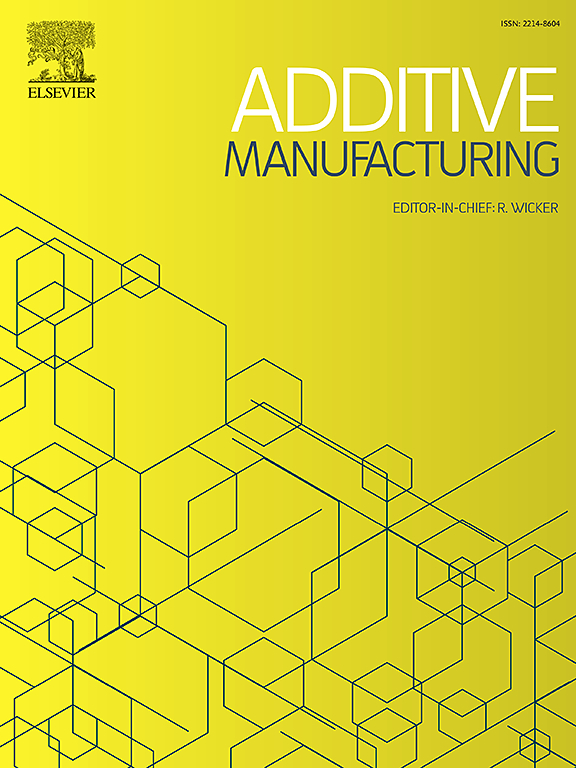Autonomous exploration of the PBF-LB parameter space: An uncertainty-driven algorithm for automated processing map generation
IF 10.3
1区 工程技术
Q1 ENGINEERING, MANUFACTURING
引用次数: 0
Abstract
Powder bed fusion with laser beam (PBF-LB) is a promising additive manufacturing technique that enables the production of complex geometries with fine resolution and material efficiency, offering significant design freedom and material versatility. However, its broader adoption is limited by the need for extensive parameter tuning, which is often dependent on the specific machine, as well as the material and batch of powder used. In this paper, we introduce a novel algorithm that autonomously identifies melting regimes in an unsupervised manner using optical data acquired from photodiodes — specifically optical emission and reflection. This method eliminates the need for labeled data and achieves an F1-score of 89.2% across both materials tested: Ti–6Al–4V and 316L. Additionally, we propose an uncertainty-driven iterative strategy designed to efficiently generate processing maps by performing experiments based on uncertainty. This approach enables up to a 67% reduction in the number of required experiments, significantly lowering the associated costs of parameter exploration, while sustaining a maximum performance reduction of only 8.88% compared to traditional full factorial designs. Our results demonstrate the potential of this method to streamline PBF-LB optimization, making it more feasible for industrial applications and paving the way for its broader adoption.
PBF-LB参数空间的自主探索:一种自动化加工图生成的不确定性驱动算法
粉末床激光融合(PBF-LB)是一种很有前途的增材制造技术,能够以精细的分辨率和材料效率生产复杂的几何形状,提供了显著的设计自由度和材料的多功能性。然而,它的广泛采用受到需要广泛的参数调整的限制,这往往取决于具体的机器,以及所使用的粉末的材料和批次。在本文中,我们介绍了一种新的算法,该算法使用从光电二极管获得的光学数据(特别是光发射和反射)以无监督的方式自主识别熔化状态。该方法消除了对标记数据的需求,并且在测试的两种材料(Ti-6Al-4V和316L)中达到了89.2%的f1分数。此外,我们提出了一种不确定性驱动的迭代策略,旨在通过执行基于不确定性的实验来有效地生成处理图。该方法使所需实验次数减少67%,显著降低了参数探索的相关成本,同时与传统的全因子设计相比,最大性能降低仅为8.88%。我们的研究结果证明了该方法简化PBF-LB优化的潜力,使其在工业应用中更加可行,并为其更广泛的采用铺平了道路。
本文章由计算机程序翻译,如有差异,请以英文原文为准。
求助全文
约1分钟内获得全文
求助全文
来源期刊

Additive manufacturing
Materials Science-General Materials Science
CiteScore
19.80
自引率
12.70%
发文量
648
审稿时长
35 days
期刊介绍:
Additive Manufacturing stands as a peer-reviewed journal dedicated to delivering high-quality research papers and reviews in the field of additive manufacturing, serving both academia and industry leaders. The journal's objective is to recognize the innovative essence of additive manufacturing and its diverse applications, providing a comprehensive overview of current developments and future prospects.
The transformative potential of additive manufacturing technologies in product design and manufacturing is poised to disrupt traditional approaches. In response to this paradigm shift, a distinctive and comprehensive publication outlet was essential. Additive Manufacturing fulfills this need, offering a platform for engineers, materials scientists, and practitioners across academia and various industries to document and share innovations in these evolving technologies.
 求助内容:
求助内容: 应助结果提醒方式:
应助结果提醒方式:


